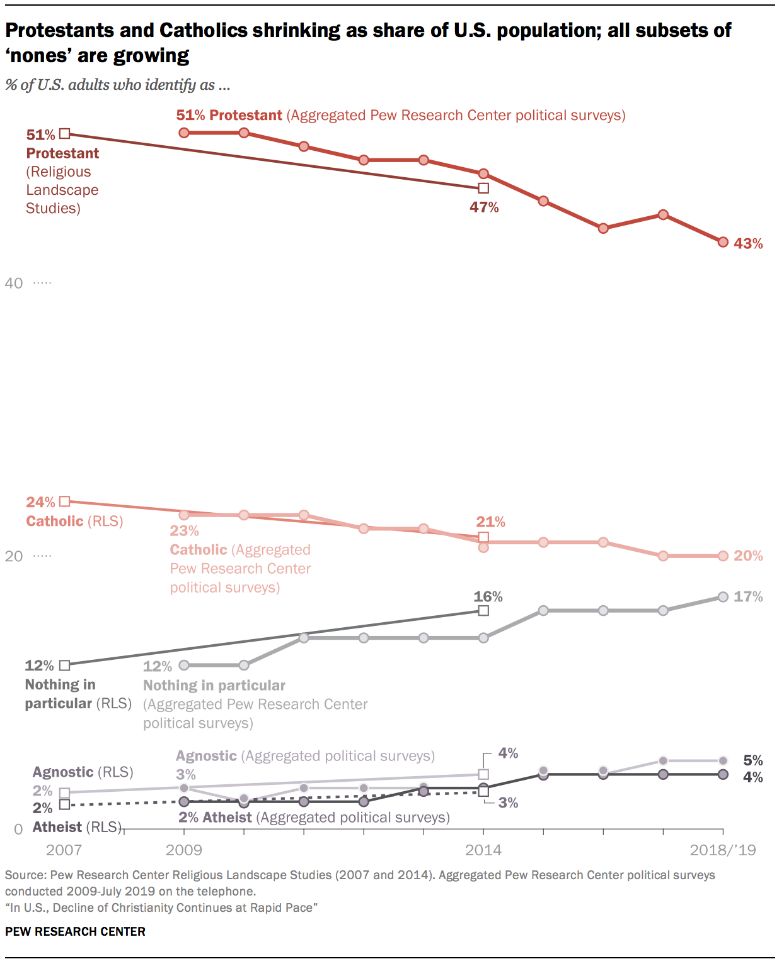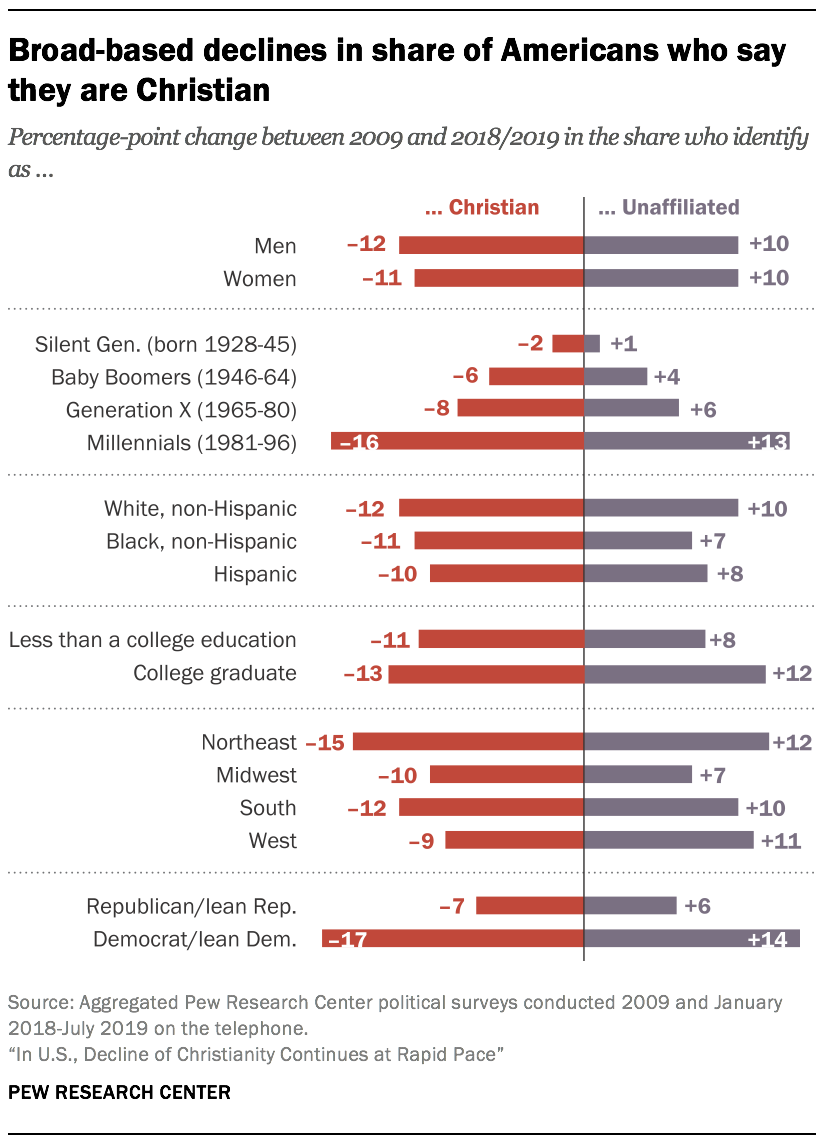The report focuses on religiosity in the United States and societal trends on this issue. The report is based on data from telephone surveys and compares the data to 2009. The number of people of faith in the U.S. has declined dramatically from 2009 to 2018, with the number of those who practice other religions or do not identify with any religion steadily increasing.
The number of self-proclaimed atheists doubled over the period under review, from 2% to 4% (See figure 1). The share of those who describe themselves as agnostics has increased slightly, while the number of people who describe their religious beliefs as “nothing special” has risen by 5%. Moreover, in addition to the decline in religious affiliation, there has been a decline in religious attendance. The decline in the popularity of attending various religious ceremonies among Christians is a decrease in the total number of people practicing various streams of Christianity. The survey showed that 62 percent of believers attend such events once a year or less, which is identical to the 2009 figures (Pew Research Center, 2019). It suggests that Christians have not stopped going to church less often, meaning that the absolute number of Christians has dropped dramatically. The number of Christian adults in the country has dropped from 181 million to 176 million, even though the population has grown significantly over the years (See figure 2).


Looking at these statistics regarding age groups, it is clear that the older generation continues to be more religious. Only 49 percent of millennials call themselves Christians, compared to 87 percent of the silent generation (Pew Research Center, 2019). Despite such differences, there has been a decline in the proportion and the absolute number of believers among all age, racial, and gender groups. While these rates co-occur within the different social groups, they are still comprehensive. For example, nonreligious men make up about 30% of the population compared to 23% of women (Pew Research Center, 2019). In addition, women attend church more often, but even the share of nonreligious women continues to increase. It is also noteworthy that the percentage of followers of other religions in the country has increased. It is partly due to a decline in the share of the Christian community and an increase in the share of nonreligious people who were more likely to be Christians in the past.
When looking at changes within political groups, one can conclude that there is a higher division based on religiosity among Democratic Party supporters. The difference between the level of religiosity of white Democrats and members of various minorities of the same political persuasion is much more significant than within the Republican Party. Black and Hispanic Democrats are much more likely to say they are Christians and attend church. Nevertheless, these findings require additional research because of the insufficient number of racial minority respondents in 2009.
Thus, there has been a steady downward trend in religiosity in the United States. This trend is observed among all ages, genders, and other social groups. Has Not only the proportion of Christians in the country fallen but also their absolute number. At the same time, the number of non-religious people, atheists, and agnostics has almost doubled over the period under review. The share of followers of other religions increased slightly, but much of this growth was due to a decrease in the share of the Christian community.
Reference
Pew Research Center. (2019). In the U.S., the Decline of Christianity Continues at Rapid Pace. Pewsearch. Web.